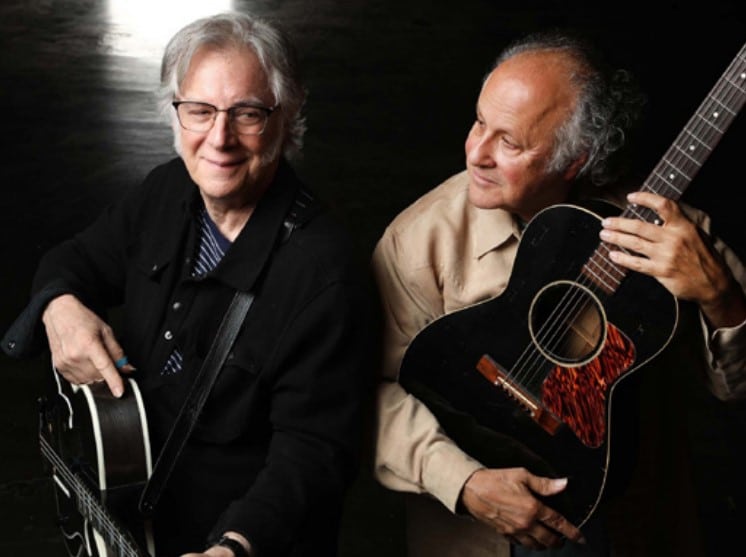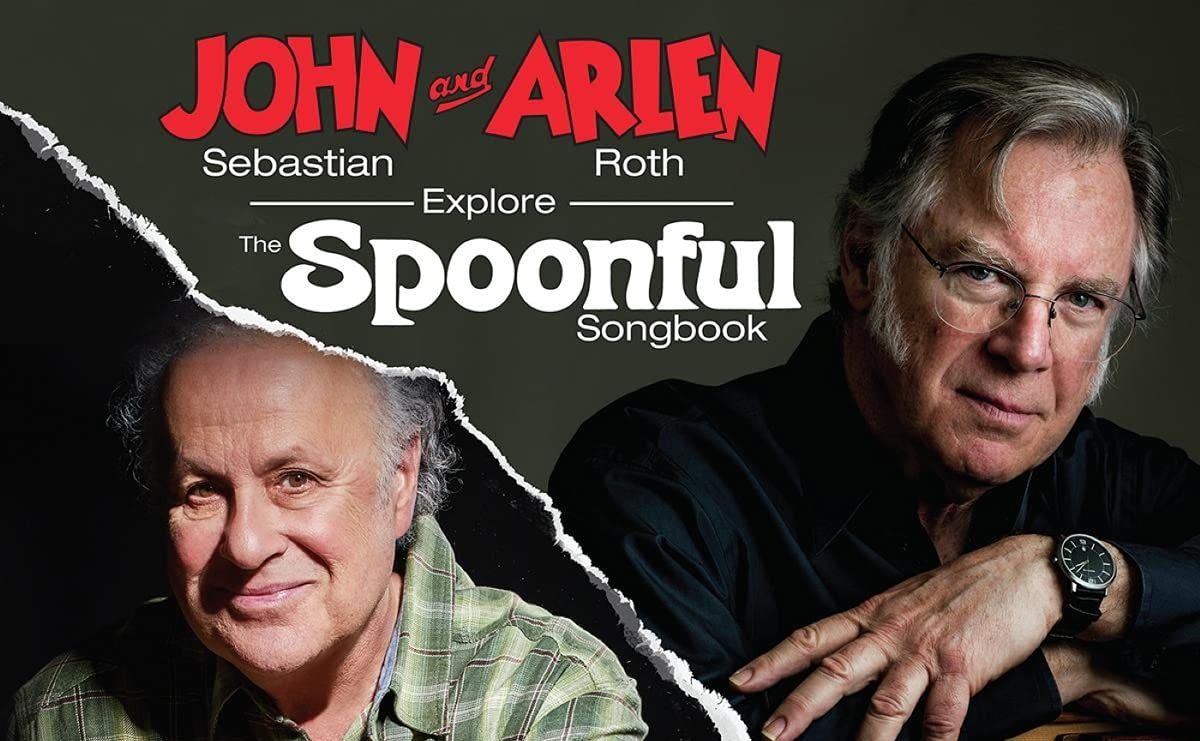John Sebastian’s legacy stretches across seven decades, a dozen solo albums, multiple groups, and when you start piecing together his reach as a songwriter and multi-instrumentalist, you’re talking about hundreds (if not thousands) of appearances on records reaching from The Doors to NRBQ to Johnny Cash to Langhorne Slim. He went electric with Bob Dylan, performed at Woodstock (and the 1970 Atlanta International Pop Festival held in Byron, GA), wrote one of television’s most recognized themes (“Welcome Back”), and in 2000, John was inducted into the Rock and Roll Hall of Fame as a member of the Lovin’ Spoonful. Profilic doesn’t even come close to encompassing Sebastian’s career and influence.
Embedded within the rock n’ roll DNA of American music, Sebastian’s tenure with the Lovin’ Spoonful provided some of the decade’s most iconic hits including “Do You Believe In Magic” and “Summer In The City” (both considered among the greatest songs of all time), and though he’s retained selections in his live set over the years, John had yet to revisit his Spoonful tunes in the studio. At the suggestion of his friend Arlen Roth, a die-hard fan of the Spoonful and its versatile guitarist Zalman Yanovsky, Sebastian began to entertain the idea of an album of instrumental versions. Roth, a bonafide guitar legend himself who’s played with Simon & Garfunkel, Bob Dylan, and John Prine, just to name a few (he was also the man tasked with teaching Ralph Macchio how to play a telecaster in the 1986 cult classic Crossroads and is currently teaching Michael Shannon how to be George Jones), had already released deep instrumental explorations of the Rolling Stones as well as the aforementioned Paul & Art. The two set out to give Lovin’ Spoonful songs the same treatment, but in the end, their enthusiasm led to something much grander.
John Sebastian and Arlen Roth Explore the Spoonful Songbook hones in on the heart of the matter, retelling classics like “Lovin’ You”, “You Didn’t Have to Be So Nice”, and “Darling Be Home Soon”. It’s two old friends, who just happen to be highly skilled musicians, reminiscing over some of their favorite songs. Embracing a wider approach than their original vision of purely instrumental takes, Sebastian takes the vocal on several tracks with welcome harmonies from Austrian sisters the MonaLisa Twins while even offering up the lead to Arlen’s daughter Lexie Roth on “Didn’t Want To Have To Do It”.
Calling from his home in Woodstock, NY, John Sebastian shares his thoughts on returning to the music of the Lovin’ Spoonful, the evolution of recording, and the mythology of his era.
AI- The decision to go back into the studio and explore Lovin’ Spoonful songs with Arlen– now I haven’t spoken to him, so I can’t really conjecture what he wanted to get out of it, but I totally understand the desire to want to stretch out his skills on some of these songs to see what he could do. What about you? Once you decided to make the album, what did you want your takeaway to be?
JS- Well, it was a very straightforward approach, really, because Arlen and I had played together in a lot of different circumstances, you know, benefits, last-minute things where you just have to make up a band out of strangers (laughs) and all kinds of circumstances. I just knew that he never lost his footing. He had done this wonderful series of CDs, instrumental versions of acoustic Rolling Stones, and acoustic Paul Simon and Art Garfunkel because he played with both gentlemen separately and together. So listening to these albums, I was really, really impressed. The next time I saw him, I said, “Catherine and I listened to this stuff at dinner time and it’s just such a great vibe!” And he looked at me like I was a mad man and said, “And you never made one of these kind of albums?” (Laughs)
I said, “Arlen, I’ve been so afraid of touching the Spoonful legacy because they’re such wonderful playing, and Erik Jacobsen– still such a great producer– and the whole team was great. So I was really reluctant until we started to just fool around in the living room. I started to realize the depth that Arlen had taken in Zal Yanovsky, the Lovin’ Spoonful’s, really quirky guitarist. In fact, he was the guy who started selling Yanovsky’s stuff back to me, saying, “No, man, this was the beginning of this intersection of the blues and country and pedal steel!” He used those Floyd Cramer devices of two notes representing a slide or something like that. Having Arlen with so much info, he just had taken in Yanovsky so well that this idea began to not sound so terrible! Part of it was that it was homey. I mean, it didn’t sound like 70+’s putting 40 studio people to work and, “Here’s my new album!” It was us! As far as your first question, playing with Arlen, my job is to play the frame. It’s that simple.
In many ways, you’ve had a great run as an accompanist as well– as has Arlen. So in a way, did you feel like you were really supporting him in your role for this album, as opposed to the other way around?
Yes! Yes! It was really a double support because he’s, like I said, reminding me of all these little details of those records and as Arlen said, “You know, John, if we did this, we’d have half the arrangement licked!” (Laughs)
During the pandemic, especially during the quarantine period, a lot of different artists took it as an opportunity to revisit their full catalogs. Lots of different artists went online to do streaming shows where they dug into past albums, and some of ’em hadn’t played those songs or even really looked at those records in years and years and years. I’ve always been curious about, when I talked to folks that did that, what they rediscovered about that work and themselves. How close were you to the songs on the album? Were there pieces that you hadn’t really experienced in a long time and what did you rediscover?
Well, there certainly were tunes that I hadn’t touched in a very long time. I guess my rediscovery process really accelerated after we had finished our basic tracks due to a horrible coincidence [of recording an album and COVID]! Or maybe it was just that we had Ira Coleman, a wonderful bassist. And Eric Parker– what a great vibe on the drums! We had pretty much done at least a dozen of the tracks already as a foursome, and that’s when we suddenly could not work in the same room together because of COVID.
I don’t have a home studio, but a guy four blocks from me has a great one. Arlen has the same kind of situation that he made all of these acoustic CDs with. And so now we were both in the accompanist role! It was very interesting because we were very determined not to get it note-y or get it stuffed in any way. I’d get something from him where I said, “Oh, brother, now I want to put autoharp on this thing!” And then I’d send it back to him, and he’d say, “Let’s take the autoharp out here and let me do this here.” And so the arrangements kind of evolved the same way that he had worked with Simon or Garfunkel, you know, to say you trade stuff back and forth. Especially with the wonderful capabilities of recording these days!

I’m glad that you bring that up– the capabilities of recording now– because so many artists employed the remote recording idea while they were putting together projects this last year and a half. You have had the unique opportunity to be involved in the recording process over the decades and seeing that progression and that change from original early analog to the dawn of digital and into now with the home studio phase where you have so many options to bring people in from all over the world. How do you feel about it now versus when you started?
It’s wonderful that it advances. There were moments when it just was like getting a breath of fresh air to have more than three tracks! That was amazing! Just think how carefully you had to do the pile, in what order you had to do it so that the right elements would stick out when you were done. This was one of the skills of Erik Jacobsen, and it was already running at three-track and four-track. So when we got eight-track tape– holy mackerel! Now we can really swing free! That was an amazing moment!
Of course, then we go to 24 and 48, and somewhere, we’re approaching infinite possibility. That’s where humans usually fail is right there because what are you gonna do? You’re gonna overpitch it! You’re gonna just do too much! And then it becomes a kind of a confusion. I think in some ways, as artists who also do a lot of accompaniment work, we were super conscious of that particular element. So we really didn’t employ anything more than about eight tracks, even with overdubs and the occasional vocal where we change our tack. We had these wonderful accidents happened! Lexie Roth heard our version of “Didn’t Want To Have To Do It” and said, “Oh, give me a chance! I love this song! I wanna sing it!”
And she does a wonderful job! A true highlight on the album!
I think so, too! Having that vocal completely changed [everything]. As soon as we got it back, I started erasing all of these harmonica layers I had done (laughs) It was very funny! And we came right back to pretty much John and Pops while she sang!
So for you, it’s what you don’t include that makes the real difference?
That’s an interesting way of puttin’ it, but yeah!
You talk about Lexie singing. There’s been a great deal of talk about the MonaLisa Twins appearing on the album– just terrific harmonies! Your son joins you on the album as well. I wonder, having done this project with Arlen, what do you want to do next? Did it give you a taste to try to do some other collaborations? I mean, lots of artists have done albums that contain multiple duets with other artists from all over. Is that something that you’ve considered?
Actually, this was kind of trying to avoid that kind of album. I really didn’t want to go in that direction. I’ll just get Elton John and then people will buy it ’cause he’s on the record!
I read an interview you did that specifically addressed inconsistencies in the John Sebastian Wikipedia page, and I just thought that was fantastic! I think that there’s a lot of legend and conjecture on there that you cleared up just beautifully. Your generation of artists, there’s always a great deal of mythology that even today continues to grow. Why do you think that is? Why do you think that status continues to resonate?
I think that we were doing it at a stage where rock n’ roll did not promise fortunes. It really was only a few short years after we were starting our Spoonful idea and Roger McGuinn was starting to be a Byrd. It was a point where you were doing it because it was either entertaining a couple of really important people, like maybe a key woman or two– or in my case, Zal Yanovsky, who as well as being a comic, was always such a wonderful audience. If I could get a funny song like “Jug Band Music” or “Pow”, he would be so into it! And it made the actual session go beautifully!
